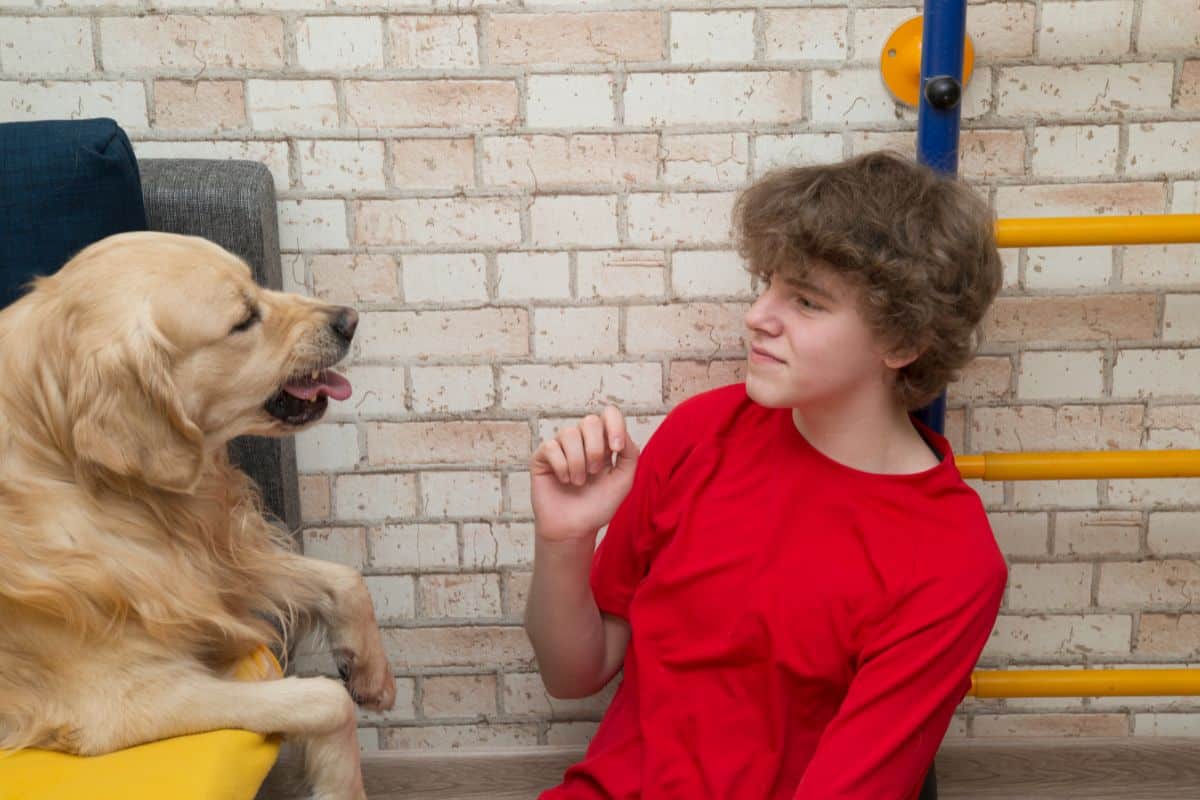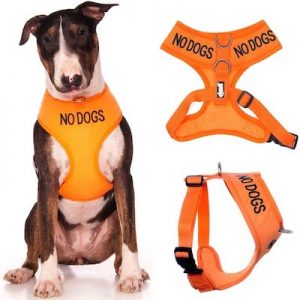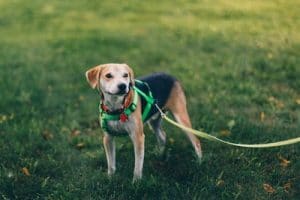If your previously well-behaved dog suddenly starts showing signs of aggression, it can be one of the most confusing and worrying experiences of your life.
Aggression in dogs can become a serious issue if not placed in check. When a dog turns aggressive without warning, there’s no telling who that aggression might be directed against. It could be you, your friends or family, a stranger, a child, or even another dog.
To help your dog overcome their aggression, it’s pertinent to figure out the cause of this behaviour. You’ll have to observe and track changes in the dog’s behaviour and consult with a veterinary professional or a certified dog trainer.
Identify the cause of sudden aggression in your dog.
It’s important to note that dog aggression is not a one-size-fits-all issue, and many factors can contribute to the behaviour. Sometimes, it’s easy to understand what has caused an outburst of aggression, but sometimes, it can feel like a complete enigma.
The most common causes of dog aggression include fear, territoriality, protectiveness, dominance, and pain. Additionally, a dog’s past experiences, genetics, and environment can all play a role in developing aggressive behaviour.
Canine aggression is displayed through body language and/or active displays. These can include:
- Intense staring
- Still and rigid body language
- Growling
- Snarling
- Barking
- Lunging
- Snapping
- Biting
Remember: If your dog shows any signs of aggression, do not allow other people, especially children, to pet or comfort your dog.
A. Medical Causes:
1. Injury Or Illness
These two are the leading causes of sudden aggression among dogs.
If your dog is in a lot of pain, it may start showing various symptoms, including growling or snapping at anyone who tries to touch the area in pain.
If the pain is so severe, a dog may start acting aggressively before anyone has even touched the area.
For example, if your dog suddenly becomes aggressive on walks, it may feel threatened by the presence of other humans or dogs. In this instance, your dog is trying to protect itself from further injury.
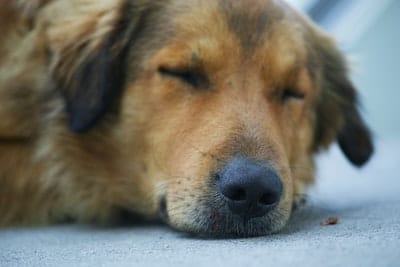
If an injury or an illness is causing your dog’s sudden aggression, you will probably see other symptoms, including:
- Licking the affected area
- Hiding
- Panting
- Drooling
- Limping
- Lethargy
- Reduced appetite
If you think your dog is unwell, take them to a vet as soon as possible. Pack a strong lead and harness and fit a muzzle if necessary to avoid an accident at the vet’s clinic.
Additionally, you can explain your dog’s aggression beforehand, and your vet will be trained to handle it accordingly.
2. Cognitive Decline
Their cognitive abilities can decline when dogs age, resulting in confusion, disorientation, and behavioural changes.
If your senior dog is suddenly displaying aggressive behaviour, have them evaluated by a veterinarian to rule out cognitive decline.
3. Hormonal Imbalances
Hormonal imbalances can also be a contributing factor to aggressive behaviour in dogs. Conditions such as hypothyroidism or Cushing’s disease can lead to changes in mood and behaviour, including aggression.
B. Environmental Causes:
This study from February 2020 discusses the warning signs in owner’s and dog’s behaviour that may help predict sudden aggression.
1. Fear or Anxiety
Your dog’s aggression may also be caused by fear. Sometimes, when dogs are scared, they can act out aggressively.
It’s usually easy to tell when a dog is scared. You’ll often notice a sudden change in body language; their ears will flatten back, their eyes will widen, they’ll freeze, and they will tuck their tails down.
These are warning signs that turn into aggression when left unchecked. If you’re concerned about your dog’s fear of aggression, try and make your environment as safe as possible.
Consult a behaviourist to help you and your dog overcome their fear.
IMPORTANT: if your dog is showing signs of fear, respect them. Do not punish your dog for being scared, as this could easily escalate into aggression.
Read More: Is It Safe To Look Your Dog In The Eyes?
2. Lack of Socialization
Mutts that weren’t socialised early can become aggressive when meeting new people or facing unfamiliar situations. Socialisation is an important part of a dog’s upbringing and can help prevent aggressive behaviour later in life.
3. Territorial Aggression
It happens when your dog gets aggressive as a show of strength against a perceived intrusion into their territory.
Read More: Put An End To Dog Fence Fighting Aggression
C. Traits to Look Out For:
1. Trigger Identification
Other than the cause, it’s important to identify the trigger for your dog’s aggressive behaviour.
This can help address the issue’s root cause and prevent future incidents. Triggers include new people, other animals, loud noises, or unfamiliar surroundings.
2. Guarding
Another leading cause of sudden aggression is guarding, or resource guarding.
Although it’s normal for dogs to love (and sometimes get a bit obsessed) their favourite toys or food, if your dog has begun fiercely guarding such objects, it can lead to aggression.
There are many reasons why dogs may start resource guarding, including genetics, breeding, or a need for proper training or socialisation in puppyhood.
If a dog has a history of harsh training methods, this may also lead to resource guarding or possessive aggression.
Resource guarding can usually be overcome with safe, at-home training. However, if you think your dog’s aggression is too severe, you should contact a certified behaviourist or trainer.
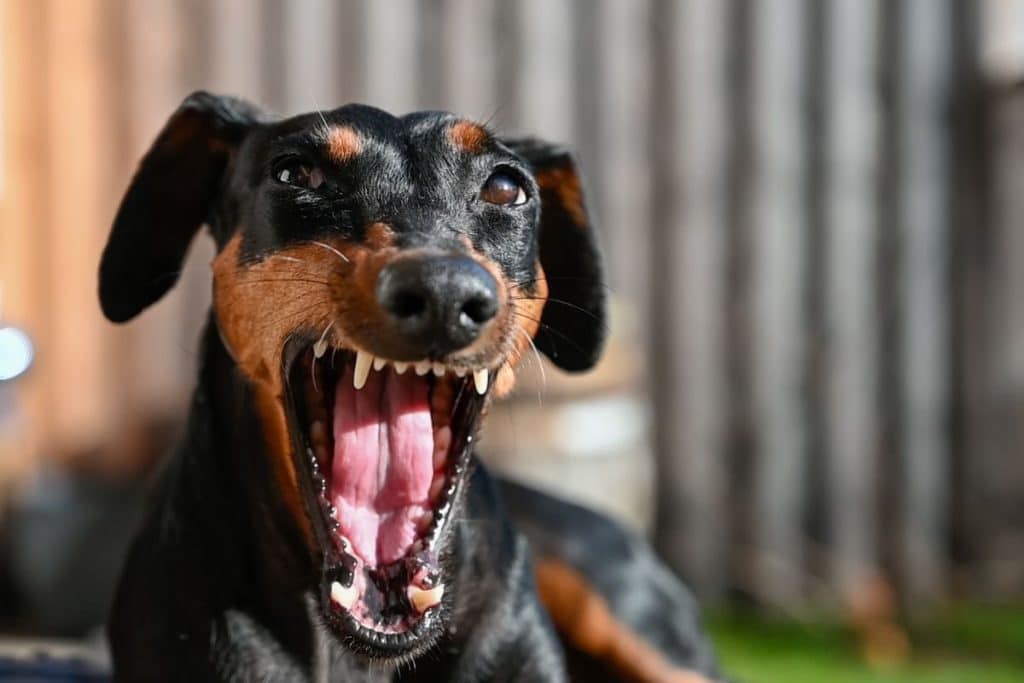
3. It’s in their personality.
Unfortunately, it may just be in your dog’s personality. Not all dogs can cope with meeting new people, going to new places, or doing things that scare them.
If these situational experiences contribute to your dog’s aggression, the easy answer is to stop putting your dogs in situations that scare them.
How to treat sudden aggression in dogs?
A. Make them feel safe and calm.
If an aggressive outburst happens in a stressful situation, you could learn from this. Remove triggers from your dog’s life and make them feel as calm as possible.
This will give your dog a ‘cortisol break,’ and it will discourage aggressive behaviour from occurring until you can get it treated.
Keep your dog separated from other dogs, avoid having visitors in the home, use blinds to disguise the outside (if they’re fearful of passers-by), and more.
B. Seek professional help if necessary.
Several experts can help you, including a behavioural therapist and a veterinary behaviourist.
Read More: How To Take An Aggressive Dog To The Vet
1. Veterinary Professional
The first thing on your list should be to see the vet or a veterinary behaviourist. You’ll need to rule out any underlying medical conditions, and your vet will do so with a full physical evaluation, blood work, x-rays, and more.
They can also work with you to develop a treatment plan that addresses the physical and behavioural aspects of your dog’s aggressive behaviour.
2. Behavioural Therapist
If there are no medical issues, take your dog to see a dog trainer or behaviourist. Licensed trainers and behaviourists who specialise in aggression can help you train your dog.
They will also help you identify what’s causing the aggression and teach you how to manage it safely.
C. Steps to take at home.
Once you have sought professional help, there are several steps you can take to help your dog overcome their aggressive behaviour.
1. Avoid punishment-based training.
Punishment-based training methods, such as physical correction or verbal scolding, are ineffective in addressing aggressive behaviour and can worsen the situation.
Instead, focus on positive reinforcement techniques that reward your dog for good behaviour.
2. Work on behaviour modification
Behaviour modification techniques can change your dog’s behaviour by addressing the underlying causes of their aggression.
This may involve changing how you interact with your dog, providing them positive experiences, and teaching them new skills and behaviours.
3. Implement preventative measures.
The steps outlined in the preventative measures section, such as positive reinforcement training, socialisation strategies, and providing physical and mental stimulation, can also be effective in addressing aggressive behaviour.
By implementing these measures, you can help prevent your dog from becoming aggressive in the first place and maintain a healthy and happy relationship with your pet.
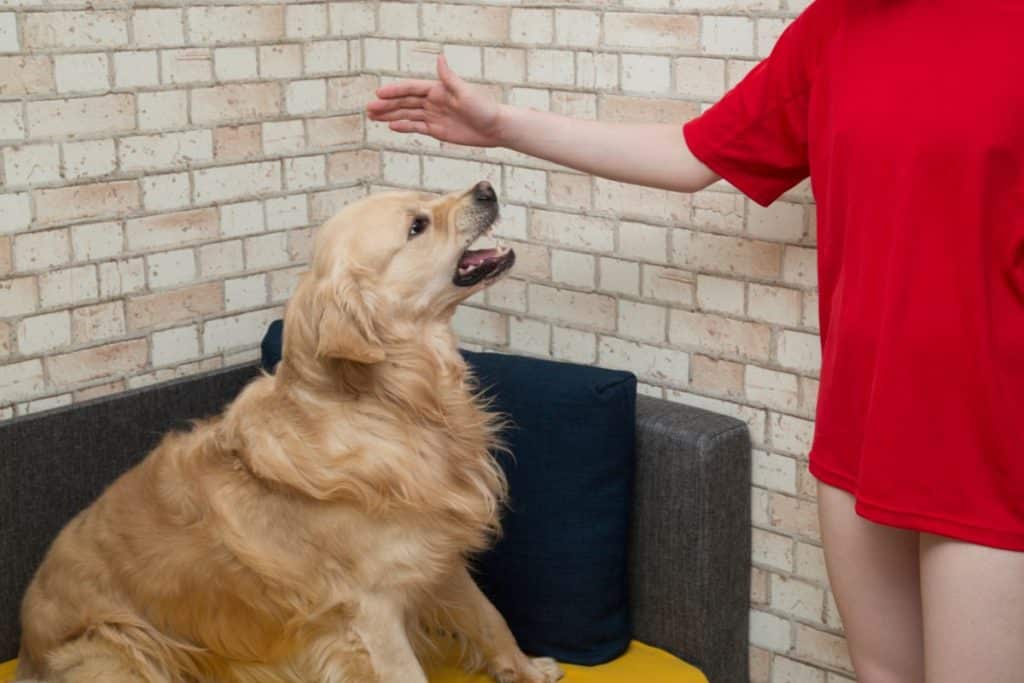
4. Get ahead of resource guarding.
To treat resource guarding at home, you can start by letting visitors know about the situation so they don’t approach or interrupt your dog while it’s near the guarded items.
NEVER tell your dog off for resource guarding – it can often worsen the situation! If you need to take an item away from your dog, exchange it for something rather than leave it with nothing.
When doing the exchange, leave other food or high-value treats a distance away, so your dog has to move to get them. This way, you can move safely and calmly to the item you need to remove and pick it up.
You can also try teaching your dog the ‘leave it’ or ‘drop it’ cue in training – this will allow you to ask your dog for the item safely whenever you need it.
How to prevent sudden aggression in dogs?
You can take several preventative measures to reduce the likelihood of aggression in your doggo.
A. Training techniques
1. Positive reinforcement
Reward good behaviour for keeping your doggo happy and developing a trusting relationship. This can be done with treats, praise, and petting.
When a dog performs the desired behaviour, give them a treat. This reinforces the desired behaviour and increases the likelihood that the dog will repeat it.
Read More: What to do when approached by an off-leash dog?
2. Clicker training
Clicker training is another training technique that can be used to prevent aggression in dogs. Use a clicker and a reward to shape and reinforce desired behaviours.
The clicker is used to mark the desired behaviour, and the reward is used to reinforce it. This helps the dog understand what behaviour is desired, making it easier to shape it in the future.
3. Counter-conditioning
Counter-conditioning is a training technique that changes a dog’s emotional response to a particular trigger.
For example, suppose your dog is aggressive towards other dogs. Then, you can change the dog’s emotional response from fear and aggression to a more relaxed and positive response.
It’s done by exposing the dog to the trigger in a controlled manner and rewarding them for calm behaviour.
Read More: Use Aggressive Dog Warning Vest to Protect Others
B. Socialization strategies
Socialisation strategies are also important for preventing aggression in dogs.
Early socialisation is critical for preventing aggression in dogs. Puppies need to be exposed to different environments, people, and animals in a positive and controlled manner.
This helps the puppy learn how to interact with the world positively and reduces the likelihood of aggression later in life.
2. Exposing your dog to different environments
Exposing your dog to different environments, such as parks, stores, and other public places, is also important for socialisation.
It helps the dog learn to cope with new and different environments and reduces the likelihood of aggression when faced with these situations.
C. Other measures
1. Maintaining a routine.
Maintaining a routine is important for dogs, as it provides structure and stability. It helps reduce the likelihood of aggression, as dogs feel more secure when they know what to expect.
2. Providing physical and mental stimulation.
Exercise and play help reduce stress and anxiety, which can lead to aggression. Providing toys, puzzles, and other forms of stimulation can also help reduce the likelihood of aggression.
3. Seeking professional help.
Discuss all the concerns with your vet or a dog behaviourist. They can help you understand the warning signs and prevent aggression in your doggo.
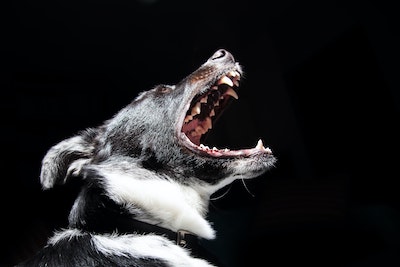
Frequently Asked Questions:
A. Can a dog become aggressive for no reason?
A dog will never become aggressive without reason. It could be due to medical causes, environmental causes, or a combination of both. It’s important to identify and address the root cause through proper training and behaviour modification techniques.
B. At what age do dogs start to show aggression?
Aggression can occur at any age in dogs but is most commonly seen in dogs between 1 and 3 years old.
C. Do dogs go through phases of aggression?
Your dog may go through phases of aggression, especially if their environment or routine changes. However, addressing aggressive behaviour is important before it becomes a habit and harder to correct.
D. How can I tell if my dog’s aggression is fear-based or territorial?
Fear-based aggression is usually characterised by cowering, avoidance, and aggressive behaviour when faced with a perceived threat. Territorial aggression is when a dog becomes aggressive to protect their territories, such as their home, yard, or food.
E. How can I protect my children from my dog’s aggressive behaviour?
To protect children from sudden dog aggression, seek professional help from a behavioural therapist. Supervising interactions between your doggo and children, providing proper training and socialisation, and implementing preventative measures can help reduce the risk of incidents.
